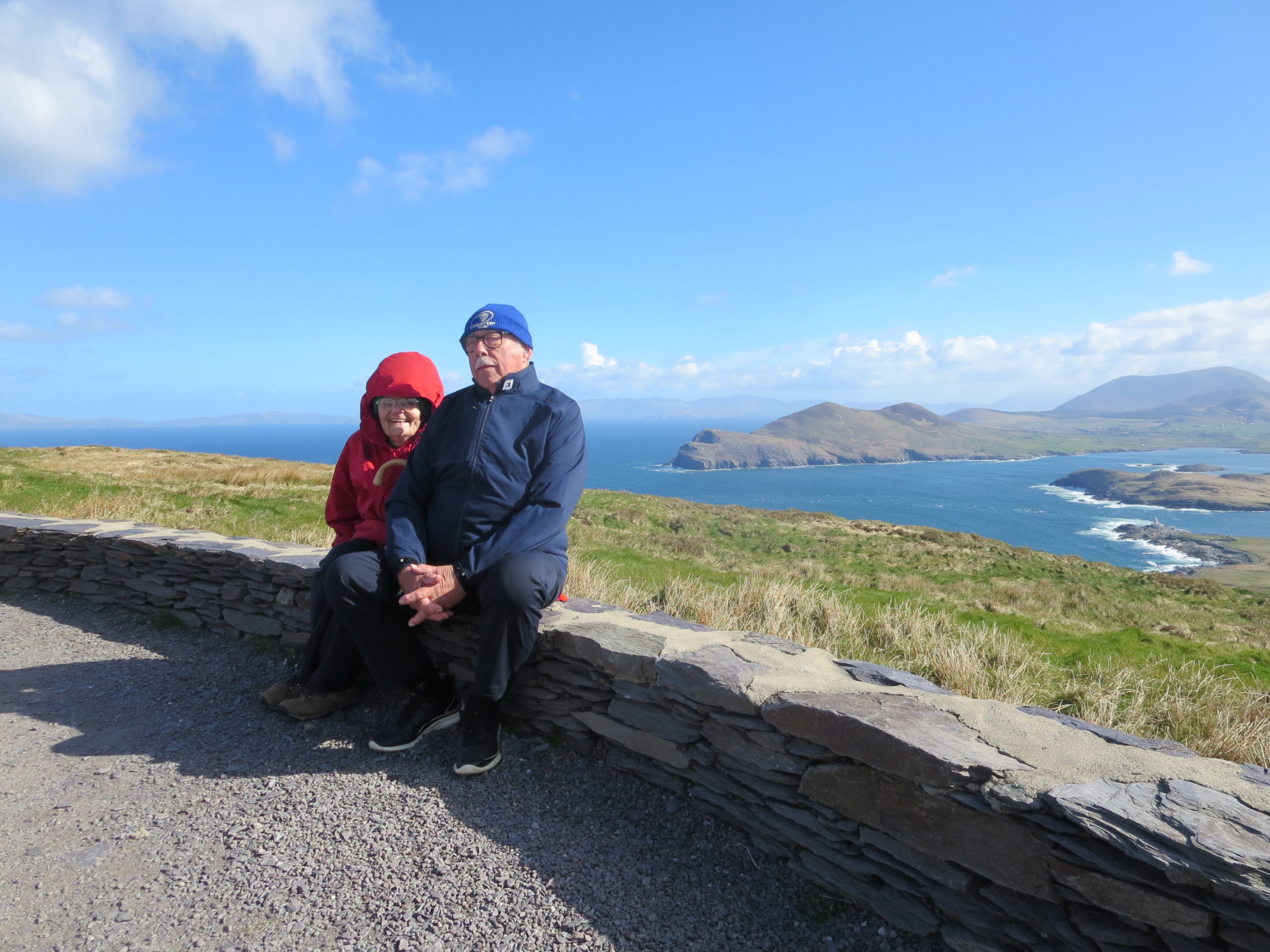
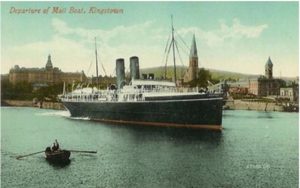
Departure of the Mail Boat, Kingstown, Valentia, Island.
In our house, Valentia Island is iconic. If you knew the hair-raising, but much mocked, story of George’s first visit there, more than 70 years ago, with his Mum to buy a pig’s head – at least the way he tells it – he is lucky to be sitting here with me, muffled and buffeted, early one chilly morning in April 2025, Day 6 of our Odyssey.
We have been to Valentia a few times in our married life.
In the 1970s, (which shows how long I’ve been researching) I made a note of an inscription on a gravestone but at this late stage I can’t recall if it was in “the old church” or “the new church”, both called St John the Baptist, the second built to serve the spiritual needs of incomers, the transatlantic cable workers and Welsh slate miners who made Knightstown, the island’s capital, a great deal busier than it is today. The inscription read:
In loving memory of James Richards, who fell asleep 28 Dec 1938, aged 81 and his wife Phyllis Harvey, 18 Mar 1936, aged 72, interred at Kingswood, Bristol.[1]
I have no personal connection with this couple; it was the juxtaposition of Valentia and Kingswood which struck me. These are not two places you would ever expect to find “twinned”. (Given thought, it’s just about as unlikely as the Lindegaard/Pillinger pairing.) This was my first time at Valentia; Kingswood was where I spent the first thirty years of my life.
Nor would I have imagined Mr & Mrs Richards’ snippet would ever come in handy, but here we are, fifty years later, and I’m using it to provide “the Bristol link”, however obscure, which I try to include, hook or by crook in every blog I write, www.bristolhistory.co.uk, the stated purpose of which is to celebrate our city and its otherwise unsung residents.
I can now identify Mr & Mrs Richards as Cornish people, from Newlyn. James Richards, a postman, and Phyllis Harvey Cattran, (granddaughter of Richard Cattran, a fisherman, and his wife Margaret), were married on 9 July 1881, at the Wesleyan Church in Penzance. They had six surviving children, four of whom attended their Golden Wedding Anniversary party on 9 July 1931, at Tolcarne House, 42 Field Road, Kingswood, Bristol. Of these, two, Mrs Michael Blewett, and Mr R.M. Richards, lived in Ohio, USA; the other two, Mr J. Richards and Mrs H.P. Chipperfield lived in Hertfordshire. “Mr W. Richards, of Akron, Ohio, and Mr T. Richards of Valentia Island were unable to attend.”
The newspaper announcement included a “remarkable fact”. The birthday of Mr R. Richards, their son, fell on the same day, as did the birthday of their 13th grandchild, a grandson. This piece is full of coincidence.
Within a few years, Phyllis’s health declined, and she died at Field Road in March 1936. I hoped I might find her buried in the large Wesleyan graveyard (now derelict and out of bounds) opposite my home ground at Victoria Park, but if so, she does not have a headstone.[2] The newspaper obituary is almost a carbon copy of the celebration notice, naming the widower, and the same list of children. Thomas was still “of Valentia” so I assume he took his father back to the Island to live with him. [3]
James and Phyllis who were in Newlyn in 1901 and 1911, are nowhere to be found in the next census taken in 1921. It is tempting to believe they could have been temporally in Ohio – or in Valentia. As to Kingswood, human beings do not generally pick a random place off the map to settle; they usually know someone there already. I believe these friends were Mr & Mrs Louis Heath, of nearby Warmley, “late of Newlyn” who were named among the guests at the Golden Wedding party.
The death of James Richards was registered on the mainland at Cahersiveen in 1938.
Now, up to this very moment, 18.30 hours 15.9.2025, I had been wondering what their son Tom was up to in Valentia in the years prior to 1938. Thomas Richards is not an unusual name. There are probably hundreds. Wind back a couple of seconds before, to a time I was thinking “Nah. No chance. But then again, why not? Have a Go!” and punched in “Thomas Richards, Valentia Island, Ireland” into Google.
What happened next nearly caused my sudden demise. They would all have said
Never mind, she died happy! Doing what she loved!
A bout of excessively heavily breathing shot me airborne and being forced to obey the Law of Gravity, I spun back to earth and fell off my chair. I am exaggerating slightly, but you get the drift.
This is what I read:
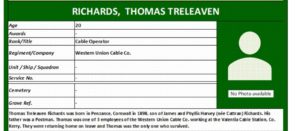
https://www.rmsleinster.com/people/RICHARDS_Thomas%20Treleaven.htm
This is the full transcript:
“Thomas Treleaven Richards was born in 1898 in Penzance, Cornwall to James Richards and Phyllis Harvey Cattran. James was a Postman who had retired by 1918. In the 1901 and 1911 censuses Phyllis was a Grocer’s Shop Assistant. Thomas was the youngest of their seven children. In 1901 an older brother was a Telegraph Messenger in the Post Office.
“By 1900 telegraphic communication was well established, with both European and transatlantic underwater cables laid. With commercial success came competition, not least in Kerry. The Waterville station was owned by an American company, the Commercial Cable Co., while from 1911 the Valentia and Ballinskelligs stations were owned by the Western Union Telegraph Co. The outbreak of war in 1914 brought two major changes to these stations. One was the volume of traffic increased enormously, meaning more staff and long hours of work required. Secondly, censorship was imposed and censors or ‘Post Office Technical Staff’ were present in the stations, eleven in Valentia and six in Waterville. Each station was surrounded by barbed wire and kept under military guard.”
“Three young men from Penzance were among the staff at the Valentia station: Thomas Richards, William Heller and Wilfred Paul.” (So Tom Richards, aged 20, was a young Spook!)
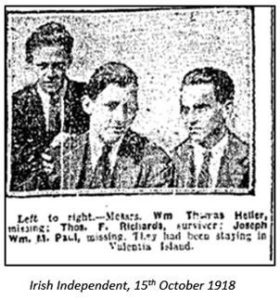 On the 10th of October 1918 the three were returning home [to England] for a fortnight’s holiday and were travelling on RMS Leinster. Three other telegraphists who had recently graduated from the Irish School of Telegraphy in Cork were also on board the Leinster: Anthony Baker, Anthony Jones and Ralph Murray were all from Waterville where their fathers were working as Telegraphists in the Cable Station. The two groups may have known each other already, and in an affidavit to a probate hearing on Anthony Baker in December 1918, Thomas Richards said that they met up on board the ship. Of the six, only Richards survived the sinking, though the bodies of Anthony Jones and William Heller were recovered.
On the 10th of October 1918 the three were returning home [to England] for a fortnight’s holiday and were travelling on RMS Leinster. Three other telegraphists who had recently graduated from the Irish School of Telegraphy in Cork were also on board the Leinster: Anthony Baker, Anthony Jones and Ralph Murray were all from Waterville where their fathers were working as Telegraphists in the Cable Station. The two groups may have known each other already, and in an affidavit to a probate hearing on Anthony Baker in December 1918, Thomas Richards said that they met up on board the ship. Of the six, only Richards survived the sinking, though the bodies of Anthony Jones and William Heller were recovered.
“In his affidavit to the court Thomas Richards relived the moments after the ship was torpedoed. He and Wilfred Paul were about to jump into the water when Anthony Baker appeared and said “Hello old man. Goodbye.” Richards never saw Anthony Baker again and believed that he had gone down with the ship. He said that he himself jumped into the water having removed most of his clothes and put his money in his hip pocket. He believed that he had been swimming for about two and a half or three hours before he was picked up.
“In 1968 Thomas Richards returned to Dublin for a reunion dinner for survivors of the sinking, organised by Tom Connolly, one of the crew.”

RMS Leinster was torpedoed and sunk by UB 123 of the German Imperial Navy in the Irish Sea on 10 October 1918. It is estimated that 571 people died from a complement of 813. The crew of the U Boat also died at sea within days. The disaster was little known until a few years ago, coming as it did so shortly before the Armistice of the First World War. There was no official list of the passengers and crew, an omission which is now being rectified, naming both the lost and those who survived. Tom Richards was one of the lucky ones.
It is known from the festivities surrounding his parents’ Golden Wedding, his mother’s obituary and the stone marker and inscription he must have had erected for his father, and naming his mother, that he was on Valentia Island in 1938 and also, that he was still alive in 1968 when “he returned to Dublin for the Survivors Reunion Dinner.”
Does anyone know more of Thomas Treleaven Richards, his activities between 1918 and 1938, and again between then and 1968 and after; did he marry and have children? If you can, please let me know. I can’t wait another fifty years to finish the story.
This is a tale of unintended consequences. Irish Odyssey, Day 6, was supposed to be quite short, about the slate mines and miners, but it is not, and for that reason, dear Brutus Tours, I append the dreaded phrase “to be continued…”
With thanks to
https://www.rmsleinster.com/ & www.rmsleinster.com/contact/contact.htm
Revd. Canon Professor Patrick Comerford, www.patrickcomerford.com
[1] If you don’t believe me, I sent the information to Bristol & Avon Family History Society Journal, no. 11, Spring 1978, page 11 where it was published as a “Stray”.
[2] I have a copy of the Monumental Inscriptions. See also https://derelictmisc.org.uk/wesley.html, “Documenting the derelict Wesleyan Chapel on Blackhorse Way (sic. Should be Blackhorse Road), Kingswood; a lesson in changing religion and how not to look after heritage.”
[3] For the newspaper announcements, see The Cornishman, 16.7.1931 & 26.3.1936


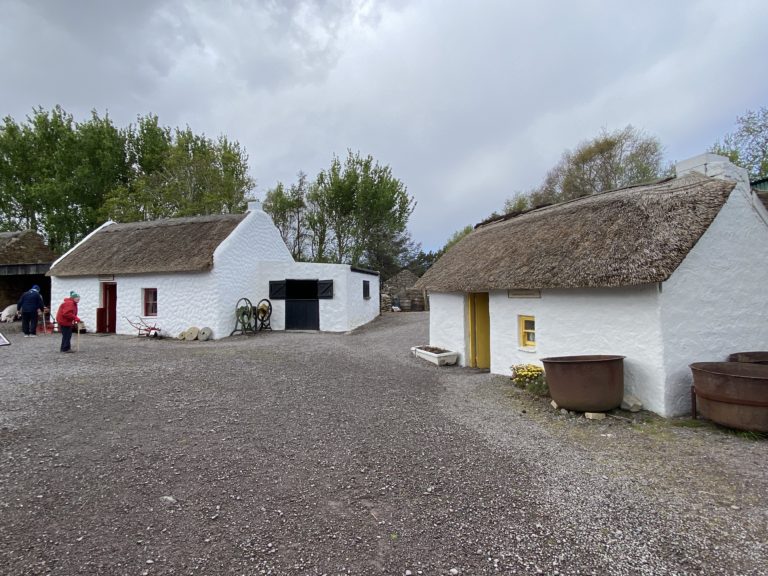
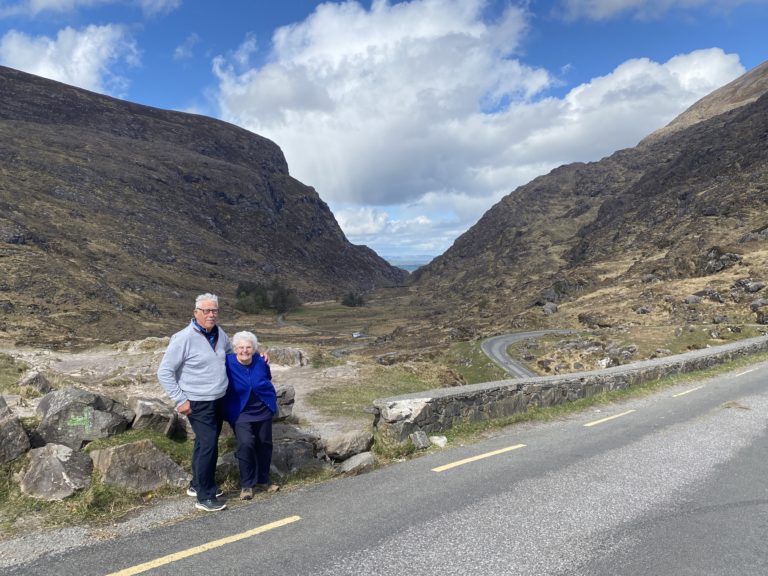
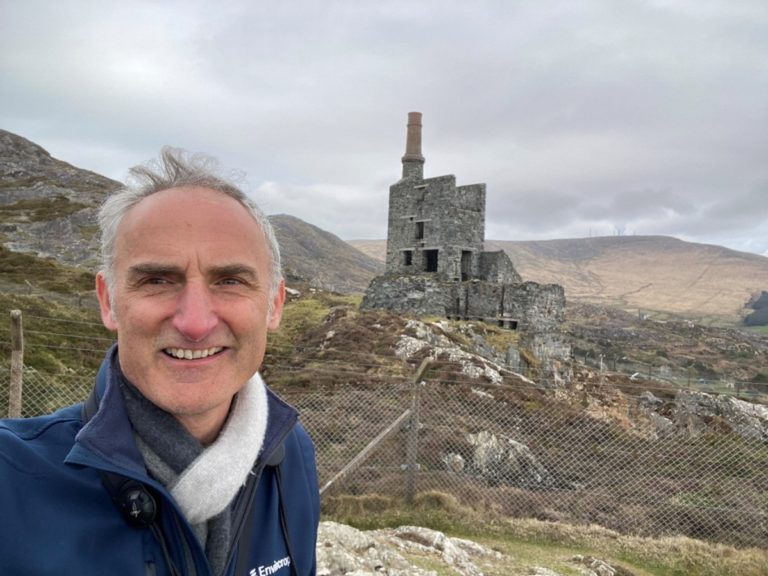
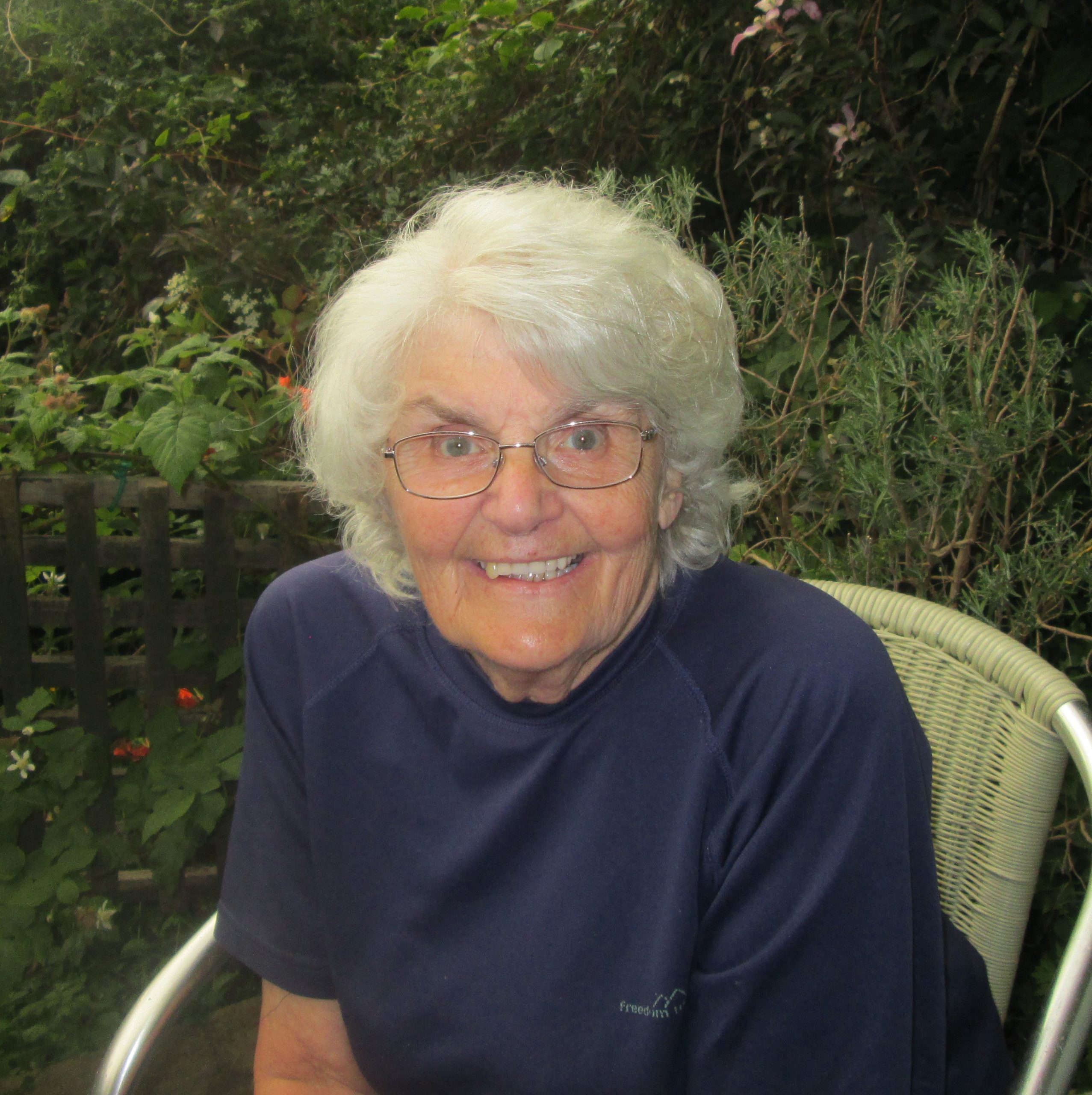




Leave a Comment